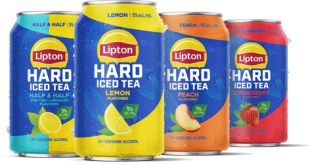Crickets are fascinating creatures known for their melodic chirping and their vital role in ecosystems. What Do Crickets Eat? has been a question. Whether you’re keeping crickets as pets, using them as feeder insects, or observing them in the wild, understanding what they eat is essential.
Their diet is diverse and varies depending on their habitat and role in the environment. Let’s explore what do crickets eat. What are the dietary habits of crickets and how you can best provide for them?

The Natural Diet of Crickets
In the wild, crickets are omnivorous and opportunistic feeders. They consume a wide variety of food sources, including:
- Plant Matter: Crickets commonly eat leaves, grass, and flowers. They also enjoy decaying plant material, which makes them excellent decomposers.
- Fruits and Vegetables: Wild crickets often nibble on fruits and vegetables they encounter, providing them with essential nutrients and hydration.
- Insects and Animal Matter: Crickets occasionally consume smaller insects, eggs, or decaying animal matter, supplementing their diet with protein.
- Fungi and Algae: These organisms are also part of a cricket’s diet, especially in damp environments.
Their ability to consume a wide range of foods makes crickets highly adaptable to different environments.
What Do Pet Crickets Eat?
If you’re keeping crickets as pets or feeder insects, providing a balanced diet is key to their health. Here are some of the best food options for domesticated crickets:
- Commercial Cricket Food: Many pet stores sell specially formulated cricket food that contains all the nutrients crickets need.
- Fresh Produce: Offer small pieces of fruits and vegetables such as carrots, apples, lettuce, and squash. Ensure the produce is washed to remove any pesticides.
- Grains and Cereals: Dry oats, wheat bran, and cornmeal are great sources of carbohydrates for crickets.
- Protein Sources: For added protein, you can provide small amounts of cat food, fish flakes, or boiled eggs.
- Water Source: Crickets need hydration, but standing water can be dangerous as they might drown. Use damp sponges or water gel to keep them hydrated.
How to Feed Crickets
Feeding crickets is relatively straightforward, but there are some important tips to keep in mind:
- Portion Size: Provide only as much food as they can consume within a day to prevent spoilage and mold growth.
- Variety: Offer a mix of foods to ensure they receive a balanced diet.
- Clean Habitat: Regularly clean their enclosure to remove uneaten food and waste, maintaining a healthy environment.
- Avoid Toxic Foods: Do not feed crickets processed foods, salty snacks, or anything treated with chemicals or pesticides.
Crickets in Ecosystems
Crickets play an essential role in ecosystems by recycling nutrients and serving as a food source for many predators, including birds, reptiles, and amphibians. Their diverse diet contributes to soil enrichment and the overall health of their habitats.
Crickets as Human Food
In many cultures, crickets are considered a sustainable and nutritious food source. They are rich in protein, fiber, and essential vitamins. Crickets raised for human consumption are typically fed a diet similar to that of pet crickets, ensuring they are safe and nutritious to eat.
Conclusion: Cricket Eating Patterns
Understanding what crickets eat provides valuable insights into their behavior and ecological importance. Whether in the wild, in your home, or on your plate, crickets thrive on a varied and balanced diet. By offering the right food and care, you can ensure their health and longevity, while also appreciating their vital role in nature.
 Digital Business Trends Powering Growth With Digital Strategies.
Digital Business Trends Powering Growth With Digital Strategies. 


